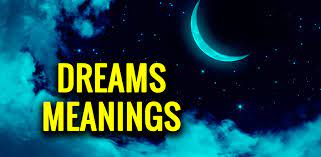Dream interpretation has fascinated humanity for millennia, vivid dream ai from ancient civilizations to modern psychology. While the exact nature of dreams remains partially elusive, various approaches offer insights into their meanings. This article explores the methods and theories behind interpreting dreams, examining both historical perspectives and contemporary understandings.
Historical Perspectives on Dream Interpretation
Dream interpretation can be traced back to early civilizations such as the Egyptians, Greeks, and Chinese. In ancient Egypt, dreams were often seen as omens or messages from the gods, and specialized dream interpreters played a significant role in society. The Greeks, notably Aristotle and Hippocrates, also contributed to early dream analysis, suggesting that dreams might reflect the dreamer’s physical health or psychological state.
In the biblical tradition, dreams were frequently considered divine messages. Figures like Joseph and Daniel interpreted dreams to provide guidance or foretell future events. Similarly, in the Islamic tradition, dreams were seen as a way to communicate with the divine, with various interpretations recorded in texts like the “One Thousand and One Nights.”
Freudian and Jungian Approaches
The 20th century brought new dimensions to dream interpretation through the work of Sigmund Freud and Carl Jung. Freud’s psychoanalytic theory suggested that dreams are manifestations of repressed desires and unresolved conflicts. According to Freud, the content of dreams, particularly their symbols, could reveal underlying psychological issues. For example, a dream about being chased might symbolize avoidance of a stressful situation in waking life.
Carl Jung, a contemporary of Freud, introduced the concept of the collective unconscious, which posited that dreams tap into a shared pool of archetypes and symbols common across humanity. Jung believed that dream symbols could be understood in terms of universal themes and personal experiences. For instance, dreaming of a hero might reflect one’s own journey toward self-discovery and growth.
Modern Scientific Approaches
Modern science has expanded our understanding of dreams through neuroscience and psychological research. Studies using brain imaging technologies have explored how dreams are related to brain activity and emotional processing. The theory of memory consolidation suggests that dreams play a role in processing and integrating memories, which may help in problem-solving and emotional regulation.
Researchers also investigate the role of dreaming in mental health. For example, recurrent nightmares or distressing dreams are linked to conditions such as PTSD and anxiety disorders. Understanding these patterns can aid in developing therapeutic interventions to address underlying psychological issues.
Practical Techniques for Dream Interpretation
While various theories offer insights into dream meanings, individuals can also engage in personal dream analysis. Keeping a dream journal is a common technique where dreamers record their dreams upon waking. Over time, patterns and recurring themes may emerge, providing clues to personal concerns or subconscious thoughts.
Another method is to analyze the emotional tone and symbols in dreams. Reflecting on the emotions experienced during the dream and the significance of specific symbols can offer personal insights. For example, dreaming of a particular place or object might relate to a significant aspect of one’s waking life.
The Cultural and Personal Dimensions of Dreams
Dream interpretation is also influenced by cultural beliefs and personal experiences. Different cultures have their own interpretations and significance attached to dreams. For instance, in some Indigenous cultures, dreams are viewed as a means of connecting with ancestors or spiritual guides. Understanding the cultural context can enhance the interpretation and relevance of dreams.
On a personal level, the meaning of a dream can be highly subjective. What resonates with one individual might not hold the same significance for another. Personal experiences, emotions, and life circumstances play a crucial role in shaping the interpretation of dreams.
Conclusion
Dream interpretation is a multifaceted field that bridges historical, psychological, and scientific perspectives. From ancient omens to modern psychological theories, the study of dreams continues to offer valuable insights into the human psyche. Whether through historical texts, psychological frameworks, or personal reflection, exploring the meanings of dreams can enhance self-awareness and provide guidance in navigating life’s challenges.

